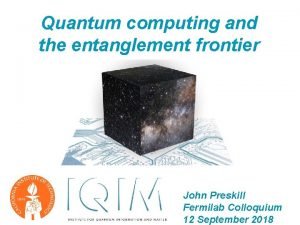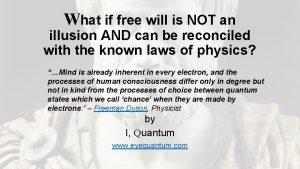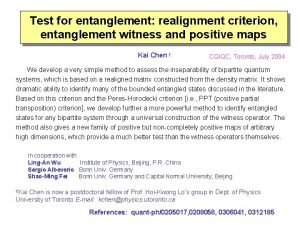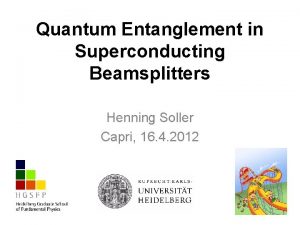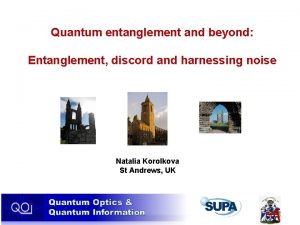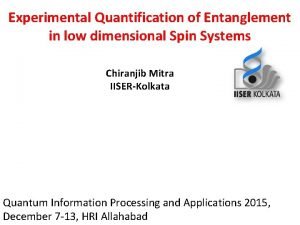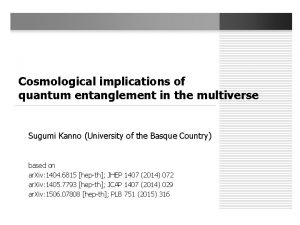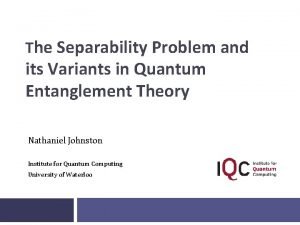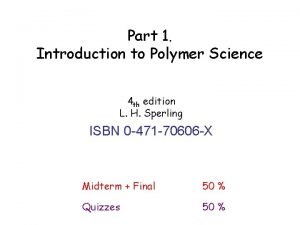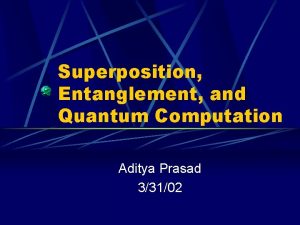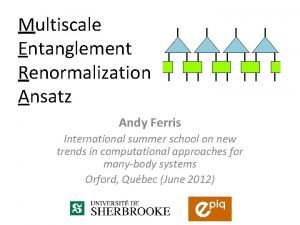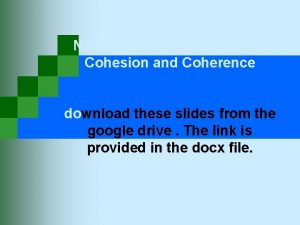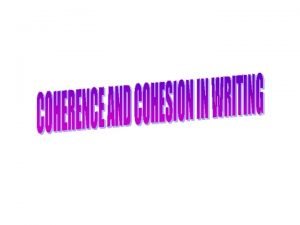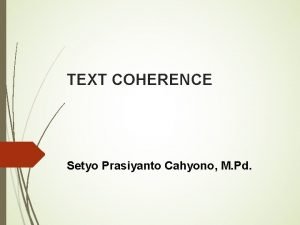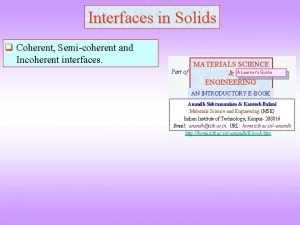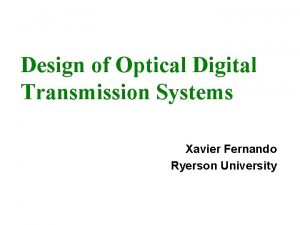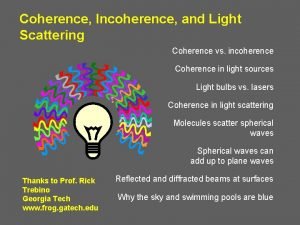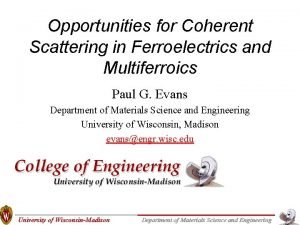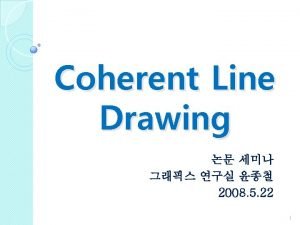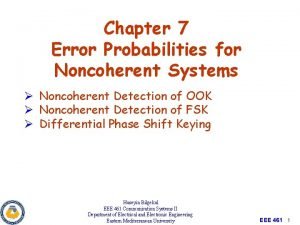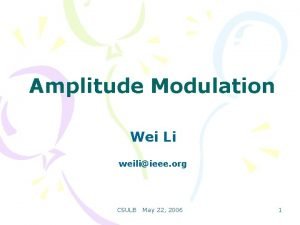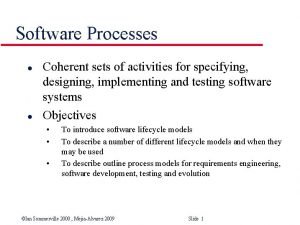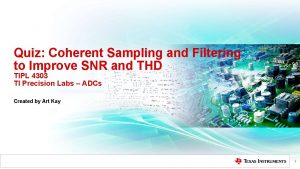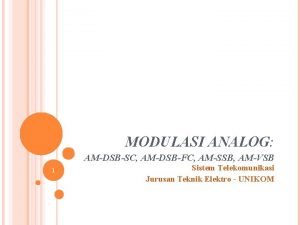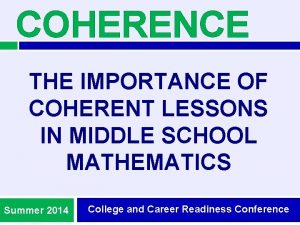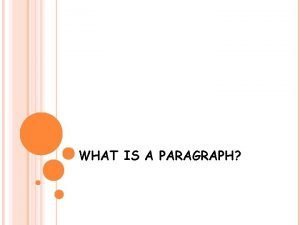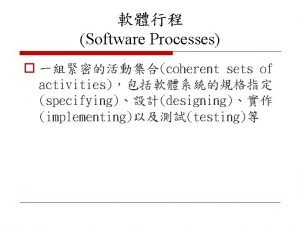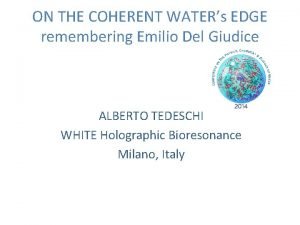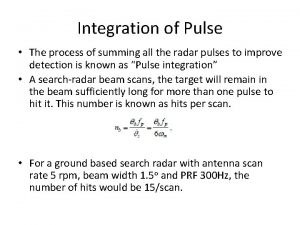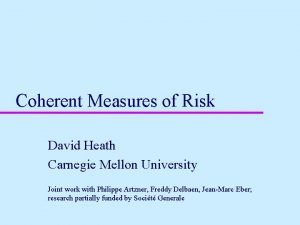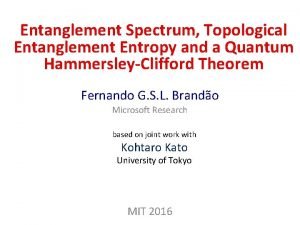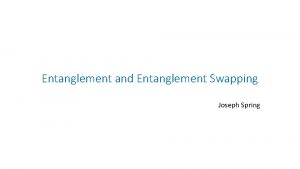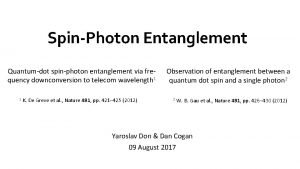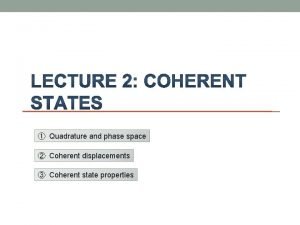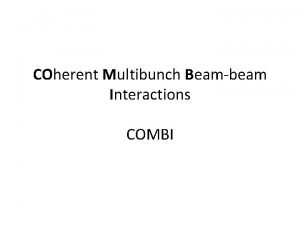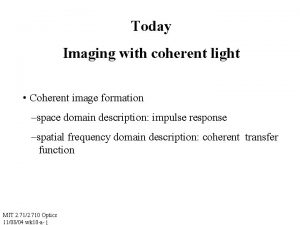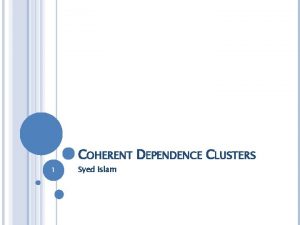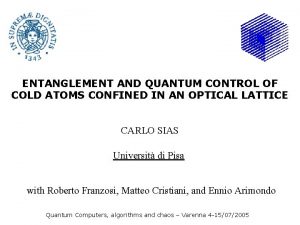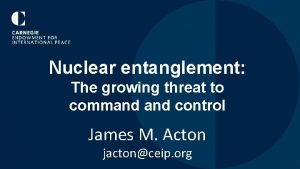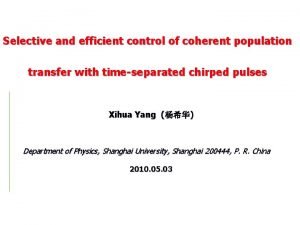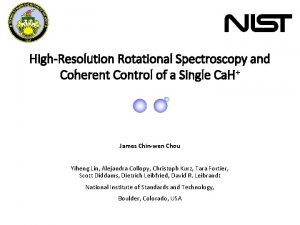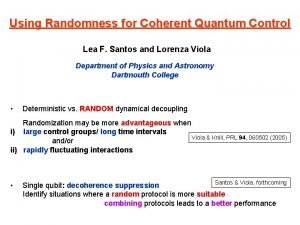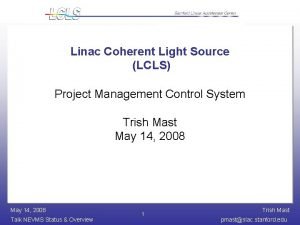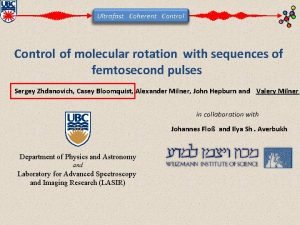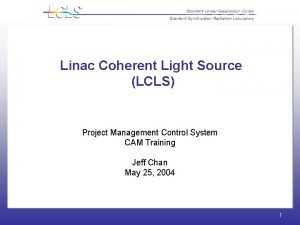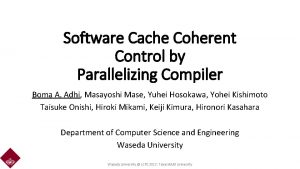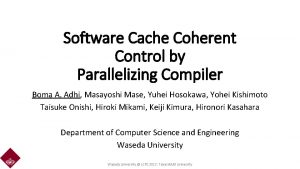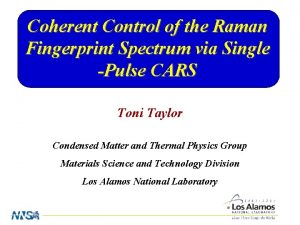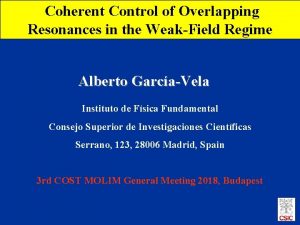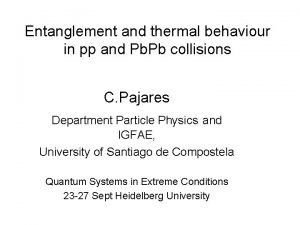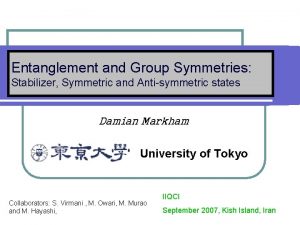Entanglement and Coherent Control Entanglement and Coherent Control











































- Slides: 43

Entanglement and Coherent Control

Entanglement and Coherent Control. objectives: Control of future events. Tools: Use quantum interference between material waves.

Entanglement and Coherent Control. objectives: Control of future events. Tools: Use quantum interference between material waves. We access the same final state using more than one pathway. Lacking the “which way” information these pathways interfere.

Entanglement and Coherent Control. objectives: Control of future events. Tools: Use quantum interference between material waves. We access the same final state using more than one pathway. Lacking the “which way” information these pathways interfere. Interference is not enough. In order to achieve control we need to “tune” this interference, and this is done with photons.

Bichromatic “coherent control” (Chem. Phys. Lett. 126, 541 (1986))

Bichromatic “coherent control” (Chem. Phys. Lett. 126, 541 (1986)) B + A-C A + B-C E E 2 pathway a E 1 pathway b E 1 2 g 1 g Eg A-B-C

The two slit analogy: the importance of the relative phase Screen + a b + + 0 0 - + - Interference pattern

light wave a

light wave a final matter state

light wave a amplitude for absorbing light wave a

phase shift light wave a amplitude for absorbing light wave a light wave b

phase shift light wave a amplitude for absorbing light wave a light wave b amplitude for absorbing light wave b

phase shift light wave a amplitude for absorbing light wave a interfere light wave b amplitude for absorbing light wave b

The key to control is that the interference patterns of different outcomes be shifted in phase. A-B + C the “screen” of relative phases A + B-C - is favored

A-B + C A + B-C - is favored

A-B + C A + B-C - is favored

A-B + C A + B-C - is favored

Generation of DC current in a molecular “wire” suspended between two leads a short pulse

Need for entanglement: the control of collisions J. Gong, M. Shapiro, and P. Brumer, J. Chem. Phys. 118, 2626 (2003) H 2(j=0, k 0 ± j=2, k 2) + H 2(j=0, k 0 ± j=2, k 2) elastic _ 1 E=0. 4 cm _ 1 E=0. 04 cm + + - -

H 2(j=0, k 0 ± j=4, k 4) + H 2(j=0, k 0 ± j=4, k 4) 2 H 2( j=2, k 2) _ 1 E=0. 04 cm E=0. 004 cm + + -

Can one observer make use of entanglement? B


-n 1


Creation of variable entanglement in polyatomic molecules A B k 2 n/2 m. A k 2 n/2 m. B


How does B view the uncollapsed wavefunction?


: Control of entanglement



Coherent Control as a Disentanglement Transformation





A second objective: to control of the direction of electronic motion. The generation of current without voltage! pathway a

pathway a pathway b

A pictorial representation Anti-symmetric - + + p wave 1 - photon absorption Symmetric (s wave) + s wave + 2 - photon absorption or + Symmetric + d wave

(forward current) - + pathway a + + pathway b

(backward current) - - + + - (forward current) + - + pathway a + + pathway b

E. Dupont, P. B. Corkum, H. C. Liu, M. Buchanan, and Z. R. Wasilewski, Phys. Rev. Lett. 74, 3596 (1995)

Acknowledgments Theory Ioannis Thanopulos (Univ. of British Columbia) Einat Frishman (Univ. of British Columbia) Petr Kral (Univ. Illinois at Chicago) Dvira Segal (Weizmann ) Paul Brumer (University of Toronto) Jiangbin Gong (University of Toronto) John Hepburn (University of British Columbia) Experiment Qun Zhang (Weizmann, now at Univ. of British Columbia) Alexander Shnitman (Weizmann) , Mark Keil (BGU)
 Quantum computing
Quantum computing What is time
What is time Firefighter maze plans
Firefighter maze plans Entanglement witness
Entanglement witness Entanglement strategy
Entanglement strategy Entanglement
Entanglement Discord
Discord Quantum discord
Quantum discord Entanglement
Entanglement Implications of quantum entanglement
Implications of quantum entanglement Quantum entanglement
Quantum entanglement Polymer entanglement
Polymer entanglement Entanglement vs superposition
Entanglement vs superposition Multi-scale entanglement renormalization ansatz
Multi-scale entanglement renormalization ansatz Thin film formula
Thin film formula Lexical cohesion examples
Lexical cohesion examples What is cohesion and coherence
What is cohesion and coherence Cew paragraph example
Cew paragraph example Coherent text
Coherent text Photodesintegration
Photodesintegration Semi-coherent
Semi-coherent Coherent detection in optical communication
Coherent detection in optical communication Scattering of light definition
Scattering of light definition Coherent scattering
Coherent scattering Coherent accelerator processor interface
Coherent accelerator processor interface Advantages of non coherent mti radar
Advantages of non coherent mti radar Edge tangent flow
Edge tangent flow Probability of error for non coherent fsk
Probability of error for non coherent fsk Coherent+
Coherent+ Coherent curriculum
Coherent curriculum A coherent set of related functionality
A coherent set of related functionality Coherent sampling
Coherent sampling Rangkaian coherent detector am-dsb-sc terdiri dari
Rangkaian coherent detector am-dsb-sc terdiri dari Importance of coherent lesson plan
Importance of coherent lesson plan What is coherence in paragraph
What is coherence in paragraph Scientific literature review
Scientific literature review Paragraphn
Paragraphn Coherent ui a modern user interface
Coherent ui a modern user interface Domain 1: planning and preparation examples
Domain 1: planning and preparation examples Coherent
Coherent Pulsed coherent radar
Pulsed coherent radar Artzner coherent measures of risk
Artzner coherent measures of risk Product vs process
Product vs process What is a positive and negative control
What is a positive and negative control
